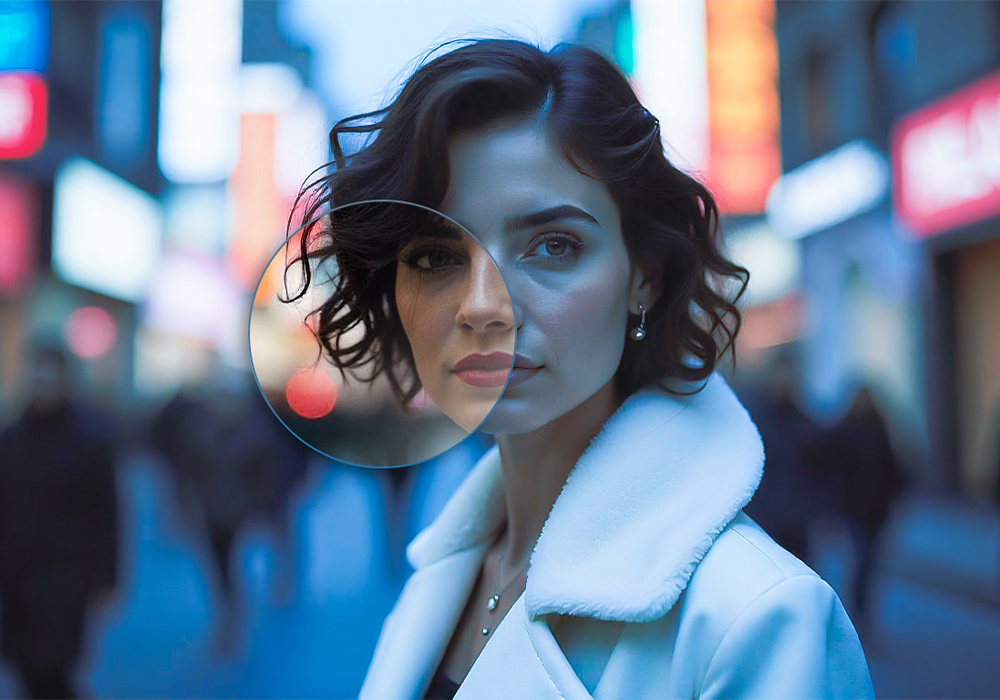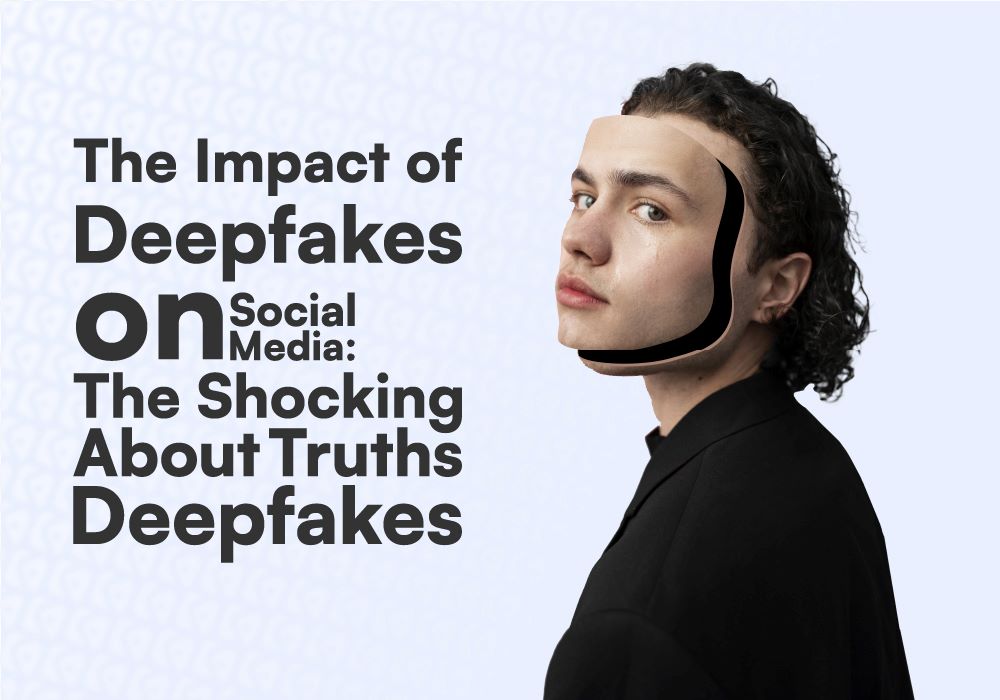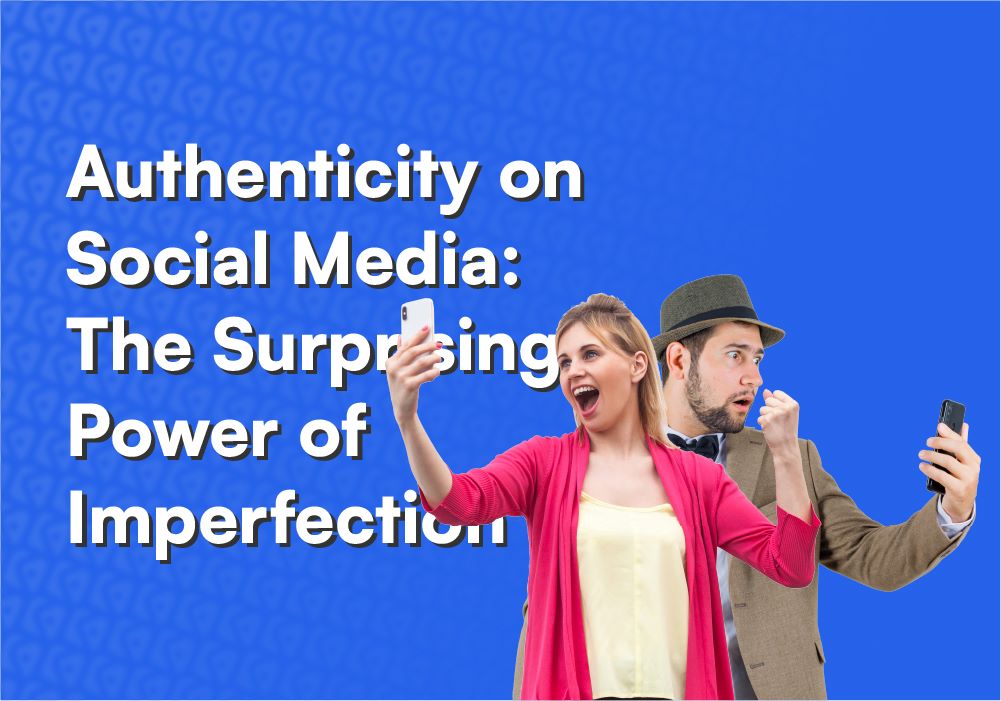What is deepfake? What are the effects of deepfake on social media?
A deepfake can be defined as: a video or audio recording that replaces someone’s face or voice with someone else’s face or voice, in a way that makes it seem very real. You might think that media manipulation is nothing new, but over time, the term deepfake has changed. While in 2017 and 2018 it was used only for images that were explicitly created by Deepfake on social media artificial intelligence, from 2022 onwards it has been used to describe images and videos that are explicitly or presumably faked by some kind of artificial intelligence. The first and most common deepfake can be traced to the use of face swapping to create “face swap” videos, which are very common today. Deepfake on social media can be very dangerous today and can lead to fraudulent abuses using people’s voices and images to do illegal things.
Why is it important for us to study the effect of deepfake on social media?
Social media such as TikTok, YouTube, Instagram, etc. have become one of the spaces for publishing these deepfakes online and very easily. Given the speed of their widespread distribution, they play a key role in publishing or controlling these deepfakes.
Ethical Implications of Deepfake on social media may cause people and users who are present on social media to lose their trust in these social networks when they see fake and fake content that is published. This fake news, which may be published on social media based on deepfakes, affects public culture, and even causes psychological or social harm to individuals and destroys users’ overall trust in online content, so this issue must be taken seriously. Here, we provide you with a comprehensive overview of the effects and functioning of this growing and expanding media effect, and in addition, we provide you with legal solutions to combat it.
What are Deepfake structures in general and how do they work?
Deepfake technology in Social Media can seamlessly stitch anyone in the world into a video or photo that they have never participated in. The main element in deepfakes is machine learning (Machine Learning), which has made it possible to produce deepfakes much faster and at a lower cost. The neural network can teach the computer all the necessary information about how that person’s face works in different angles and different lights, and using this information and tools, it can create an image similar to the same face. A series of Deepfakes are made using an algorithm called GAN (generative competitive networks) which are very professional and make the images and faces look more natural. But now, many Deepfake on social media videos are not made even with GAN anymore, because they are time-consuming and difficult to make with it.
Today, this entire process can be done easily and faster than before with the existence of artificial intelligence. Of course, it must be said that artificial intelligence has not yet been able to accurately reach a believable composition that the person who sees these created videos or images will immediately believe in their authenticity. In the continuation of making these deepfakes, the producer himself must use manual tools to change many of the parameters that the program in question could not capture well. This process is very simple and powerful, while being difficult.
For example, in 2018, Jordan Peele (a famous comedian and director) published a deepfake video of Barack Obama, the former president of the United States, in which he was seen saying insulting words about Donald Trump (the then president). His goal was to show how easy it is to use Deepfake technology in Social Media to make words that look completely believable and real even from a previous president.
How did Deepfake enter social media?
Deepfake on social media was initially for entertainment purposes. Deepfake on social media initially had an entertainment aspect, entertainment programs such as Reface, Zao or FaceApp allowed users to easily copy their image on the body of celebrities, actors or famous characters with a few simple graphic tools. These Deepfake Videos and Manipulation quickly went viral on TikTok and Instagram due to their fun and entertainment, and many people from all over the world started to use this effect without knowing that this is the same thing. It is deepfake.
Platforms like TikTok, Instagram, and YouTube make these deep fakes easy to create and spread on the internet using simple and accessible markets. When a content on these social platforms can go viral in a shocking way, their algorithm makes it go viral and more people see these deep fakes on social media. They could make this time, but nowadays, with a few uploads of photos from different angles and clicks, they can easily be made in any way they like.
Deepfake started as an interesting technology, but after entering social networks, it became a tool for entertainment, advertising and sometimes serious abuse.
Potential Positive Impacts
Deepfake, with all the information we have told you about how it works, how it is made, and its purpose, has been very useful for some graphic fields in the world and has been very effective. At first, using deepfake may seem dangerous and illegal, but if used correctly, it can be a powerful and effective tool. Here we will look at some of this information:
Cinema and Entertainment:
In the field of film and documentary, using deepfake to reconstruct or rejuvenate faces, create special effects Realism has been made possible without the need for heavy CGI, and it has made it easier for creators in this field to focus on creating more engaging and quality movies.
Education and History
Reconstructing the face and voice of historical figures for interactive education helps to make educational topics more attractive and more understandable and concrete for students.
Medicine and mental health:
Producing educational videos for patients with the face of a real doctor, in the local language and dialect, so that they can be better informed about the process of operation and treatment. For example, during difficult and complicated training in universities, the use of deep fakes is very effective for teaching surgery or dealing with psychological situations. Or helping dementia patients by reconstructing familiar faces.

Advertising and marketing
Creating custom and attractive content without the need for background people and exorbitant costs according to the customers’ taste. The possibility of producing advertisements in different languages without the need to record multiple times.
Accessible to everyone
Assisting in translating and dubbing videos while maintaining natural mouth and face expression (lip-sync AI). Increasing accessibility for the deaf or hard of hearing by converting speech into facial movements.
Ethical Implications of Deepfake on social media
Just as anything can have advantages, it can also have disadvantages, and Deepfake on social media is no exception. With the increased availability of deepfake technology, fraudsters can now impersonate executives, employees, or customers with alarming accuracy, creating significant business vulnerabilities. But using deepfake outside of the rules and regulations of deepfake violates the ethical issues of deepfake, leading to many abuses and scams in this area, and one should be aware of these issues to be safe from their consequences.
But beyond the direct financial losses, the reputational consequences are equally damaging, as manipulated media can tarnish a company’s image and cause attacks on individuals’ reputations (personal or public). Even if the scam is exposed by the company, the damage has already been done. Industries that rely on trust, such as finance, law, and healthcare, are particularly susceptible. Deepfakes are essentially impersonations, so they are a popular way to scam CEOs using artificial voices.
Declining public trust in content (Post-truth culture) ,With all these fake videos and images going viral in the digital and online world, it could eventually erode trust in social media, which has become a source of revenue and branding for large companies or businesses.It should also be noted that criminals and fraudsters are constantly finding new ways to use deepfakes, including extortion, blackmail, and industrial espionage. Companies, organizations, and individuals need to be vigilant.
The emergence of Deepfake technology in Social Media
has caused people around the world who work in certain fields and have created a name and address for themselves and have a certain reputation to be concerned about this issue. Especially in relation to the consent of individuals, accountability and the inadequacy of current laws. This has caused many people to have many specialized questions about how to protect individuals and societies from its misuse.
One of the Ethics of Deepfake is whether the people whose faces and appearance information are used have consent to this issue or not? Many videos use deepfake and manipulated videos – including celebrities, politicians or even ordinary people – without their consent. These videos can use the faces of other celebrities to transmit inappropriate behavior, make offensive remarks to the public on social media, and cause the loss of personal credibility and damage to their status, rank, and personality, etc. In addition to financial and identity losses to individuals, this issue leaves psychologically damaging effects on individuals. While in many countries, victims have no specific legal way to deal with it. Here the question arises: who is responsible for the moral consequences of deepfake? The content creator? The platform that published it? Or the user who reposted it? Currently, there is no clear and global standard for determining responsibility. On the other hand, the law that exists in this regard is often ineffective and incomplete and cannot compensate for the losses incurred. This legal loophole has opened the door to widespread abuse. The EU AI Act is one of the first legislative attempts to regulate AI-generated content. It requires creators to be transparent about whether a video has been manipulated or artificially generated. Other countries, such as the US, China and the UK, are also exploring similar solutions, although the global trend towards deepfake laws and regulations is still not uniform.
The Role of Social Platforms in Controlling Deepfake on social media
With the increasing use of deepfake on social media, the role of platforms in identifying and controlling this type of content has become more important than ever. Social media have made efforts to control the publication of this content, which have been somewhat useful. One of the common methods is content labeling. If many platforms detect a deepfake content, they mark it with warnings such as “may have been edited” or “misleading information”. Some algorithms use artificial intelligence to easily recognize the content created with deepfakes. But with daily progress, these deepfakes become more real and some of them may remain hidden from the eyes of the algorithms.
How to Spot Deepfake Technology in Social Media
Deepfake often evokes an eerie feeling and reveals subtle flaws that betray its authenticity. By training the human eye to detect these inconsistencies—such as unnatural facial movements, irregular lighting, or inconsistent audio and visual cues—and combining this skill with reliable verification techniques, it becomes possible to distinguish deepfake from real content.
There are some fairly simple things you can look for when trying to spot a deepfake:

Abnormal eye movement:
Eye movements that don’t seem natural — or lack of eye movement, such as not blinking — are red flags. It’s challenging to replicate the act of blinking in a way that looks natural. It’s also challenging to replicate the eye movements of a real person. This is because someone’s eyes usually follow the person they’re talking to.
Abnormal facial expressions:
When something doesn’t look right about a face, it can indicate a facial distortion. This happens when a simple stitch of one image has been superimposed on another.
Awkward positioning of facial features:
If someone’s face is pointing to one side and their nose is pointing to the other, you should be suspicious of the authenticity of the video.
Lack of emotion:
You can also spot facial distortion or image stitching if someone’s face doesn’t seem to be showing the emotion that should go with what they’re supposedly saying.
Body or posture looks awkward:
Another sign is that the person’s body shape doesn’t look natural or there’s an awkward or inconsistent head and body position. This may be one of the easier inconsistencies to spot because deepfake technology usually focuses on facial features rather than the entire body.
Abnormal body movement:
If someone looks distorted or off when they turn sideways or move their head, or their movements are jerky and disjointed from one frame to the next, you should suspect that the video is fake.
Abnormal coloring:
Abnormal skin tone, discoloration, strange lighting, and out-of-place shadows are all signs that what you’re seeing is likely fake.
Hair that doesn’t look real:
You won’t see frizzy or flying hair, as fake images can’t create these individual features.
Teeth that don’t look real:
Algorithms may not be able to generate individual teeth, so the lack of outlines of individual teeth can be a clue.
Blurry or unevenness:
If the edges of the images are blurry or the images are uneven — for example, where someone’s face and neck meet their body — you’ll know something is wrong.
Inconsistent audio and noise:
Deepfake creators typically spend more time on video images than audio. The result can be poor lip sync, robotic voices, strange word pronunciation, digital background noise, or even no audio at all.
Images that look unnatural when slowed down:
If you’re watching a video on a larger screen than your smartphone or have video editing software that can slow down the video, you can zoom in and examine the images more closely. For example, zooming in on the lips will help you see if they’re actually talking or if the lip sync is bad.
Hashtag Disputes:
There is a cryptographic algorithm that helps video creators show that their videos are authentic. This algorithm is used to insert hashtags in specific places throughout a video. If the hashtags are changed, you should suspect that the video has been tampered with.
Digital Fingerprinting:
Blockchain technology can also create a digital fingerprint for videos. While this blockchain-based verification is not foolproof, it can help establish the authenticity of a video. Here’s how it works. When a video is created, the content is recorded in a ledger that cannot be changed. This technology can help prove the authenticity of a video.
Reverse Image Search:
Searching for an original image, or computer-assisted reverse image search, can uncover similar videos online to help determine whether an image, audio, or video has been altered in any way. While reverse video search technology is not yet publicly available, investing in a tool like this can be beneficial.
The video is not reported by reliable news sources:
If what a person says or does in a video is shocking or important, news outlets will report on it. If you search for information about the video and no reliable sources are talking about it, it could mean that the video is a deepfake.


